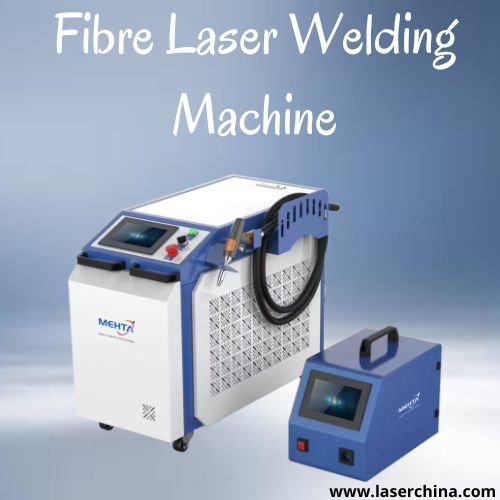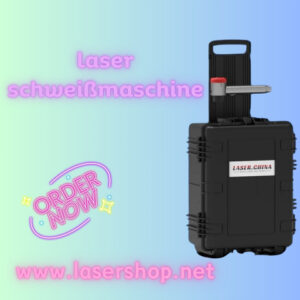
In the evolving landscape of metal fabrication, the fibre laser welding machine has emerged as a transformative force that challenges long-standing industrial norms. While traditional welding processes such as TIG, MIG, and arc welding have played a foundational role in manufacturing for decades, the growing adoption of fibre laser systems is reshaping expectations of speed, quality, and operational efficiency. But can it truly replace every traditional method? The answer requires a deep dive into what makes this technology so disruptive and where its real boundaries lie.
Understanding the Fibre Laser Welding Machine
A fibre laser welding machine uses a high-intensity laser beam generated within a fibre optic cable doped with rare-earth elements such as ytterbium. This laser beam is delivered to the workpiece through a flexible fibre optic delivery system. When the beam makes contact with the metal surface, it generates enough heat to melt and fuse the materials together.
Unlike traditional welding methods, which rely on arcs, electrodes, or filler materials, the fibre laser welding process is contactless and precisely controlled through advanced optics and computer systems. This ensures a highly concentrated heat source, minimal distortion, and the ability to weld complex geometries.
Why Industries Are Transitioning
The industrial move toward fibre laser welding machines is not about replacing old technology for the sake of novelty — it’s about addressing challenges that older methods struggle to solve. For instance, when welding thin stainless steel sheets, excessive heat from arc welding can cause warping, requiring costly rework. Fibre lasers operate with such pinpoint control that heat-affected zones are minimal, which translates to better structural integrity and appearance.
Furthermore, automation compatibility is another reason for this transition. Fibre laser systems integrate seamlessly with CNC machinery and robotic arms, enabling continuous and highly repeatable production in high-volume environments.
Materials and Applications
One of the most striking aspects of a fibre laser welding machine is its adaptability to different materials. These systems can weld stainless steel, carbon steel, aluminium, brass, copper, and even exotic alloys. The beam’s controllability allows for welding dissimilar metals that would be difficult to join through traditional methods.
Industries making the most of this versatility include:
-
Automotive manufacturing for body panels, battery enclosures, and structural parts.
-
Aerospace engineering for lightweight components requiring precision.
-
Electronics for micro-welding in delicate assemblies.
-
Medical device production for surgical tools and implant fabrication.
Precision in Modern Fabrication
Fabrication today is not only about strength — it’s about accuracy, consistency, and surface finish. A fibre laser welding machine provides weld seams that often require no post-processing. This is particularly important in industries like electronics and medical devices, where even microscopic defects can render a component unusable.
Another area where fibre lasers shine is in repeatability. Because the laser beam can be programmed to follow exact paths with micrometre accuracy, each weld is virtually identical to the last. This is a significant advantage in quality assurance, especially for manufacturers seeking ISO or other stringent certifications.
The Role in Automation and Industry 4.0
Fibre laser welding machines are not just tools — they are data-driven manufacturing assets. Modern systems can be connected to IoT platforms, feeding back information about weld quality, operational status, and predictive maintenance needs.
When integrated into a fully automated line, these machines enable “lights-out” manufacturing, where production can run with minimal human supervision. This level of integration is becoming a hallmark of Industry 4.0-ready facilities, where connectivity and intelligence are as important as mechanical performance.
Limitations That Keep Traditional Methods Relevant
While the capabilities of a fibre laser welding machine are impressive, there are scenarios where traditional welding remains more practical. For example, very thick structural steel sections may require multi-pass welding, which can still be more efficiently achieved with conventional arc techniques in certain cases. Additionally, outdoor field welding, particularly in construction or repair work, often favours portable arc or stick welders over laser systems that require controlled environments.
This means that while fibre laser welding machines are rapidly expanding into new sectors, they are not a universal substitute for every scenario — at least not yet.
Impact on Workforce Skills
The shift toward fibre laser welding technology changes the skill requirements within manufacturing. Operators no longer focus solely on manual dexterity with a welding torch but must also understand machine programming, laser parameters, optics maintenance, and safety protocols for high-powered lasers.
This shift is leading many vocational training centres and technical colleges to update their curricula. Workers who adapt quickly to these new demands often find themselves in higher-paying, more specialized roles.
Maintenance and Operational Longevity
A well-maintained fibre laser welding machine can operate with consistent performance for many years. Unlike consumable-heavy welding processes, fibre lasers require minimal replacement parts aside from occasional optical components and cooling system maintenance. The solid-state nature of the fibre laser source also contributes to long operational lifespans with minimal downtime.
Scheduled maintenance typically involves cleaning lenses, checking fibre integrity, ensuring cooling systems are functioning properly, and updating software. Compared to the consumable-heavy upkeep of arc welding, these requirements are minimal — a key reason why many companies consider the higher initial cost a long-term investment.
The Business Perspective
From a financial standpoint, investing in a fibre laser welding machine is a strategic decision. While the upfront cost can be significant, the return on investment often comes from reduced scrap rates, faster production times, and lower labour requirements. Additionally, the ability to bid on high-specification contracts in industries like aerospace or medical manufacturing can justify the investment.
Companies also benefit from reduced environmental impact, as the energy efficiency of fibre lasers lowers operational costs while aligning with sustainability targets. This is becoming increasingly important as regulations and customer expectations push for greener manufacturing practices.
Future Outlook
The technology behind fibre laser welding machines continues to advance rapidly. Beam quality is improving, system prices are gradually becoming more accessible, and integration with AI-driven quality inspection systems is on the rise. Portable models are also emerging, making it possible to bring fibre laser precision to on-site jobs, a move that could erode one of the last strongholds of traditional welding.
If these trends continue, the gap between fibre laser and conventional welding will narrow further, and we may see a broader displacement of legacy methods in industries once considered out of reach for laser technology.
Final Thoughts
The question of whether a fibre laser welding machine can replace every traditional welding process does not have a simple yes or no answer. It excels in precision manufacturing, automated production, and applications demanding flawless weld quality, but traditional methods still hold their ground in certain high-thickness, outdoor, or cost-sensitive projects.
What is certain is that fibre laser technology is no longer a niche option — it’s becoming a mainstream manufacturing asset. As industries push for higher quality, faster output, and greener operations, fibre lasers are poised to play a dominant role in shaping the future of fabrication. For businesses aiming to stay competitive, the decision is less about whether to adopt fibre laser welding and more about how quickly they can integrate it into their operations before the competition does.






